Eid is the holiday that marks the end of Ramadan. It seems to vary in length depending on the country and how long they want to close government offices. VCUQ gives students and faculty an entire week off, which they call fall break. Almost as soon as I arrived in Doha, people started asking me where I was going for Eid - it's a popular time to travel here!
So, not wanting to miss an opportunity to travel, I joined a tour group to Jordan that was organized with the help of a travel agent by the Qatar Natural History Group, which is made up of lots of British, Canadian, and American expatriots - "expats" for short. For a day-by-day account of my week in Jordan, illustrated with a few select photos that extend below this Eid posting into the Ramadan posting, read on....
Day 1: at 1:00 AM on Thursday, 12 October we congregated at the Doha airport for our Royal Jordanian flight to Amman, Jordan. Our group of 29 departed at 3:40 AM. Lots of flights from Doha seem to leave in the middle of the night for some reason or another. And did you know that Royal Jordanian serves meals on their flights - even those that only last about 3 hours? Anyway we arrived in Amman about 6:30 AM and were met by a bus and our tour guide, Osama. They took us to downtown Amman via STARBUCKS, which was a welcome sight given our sleep deprived state. We were all impressed immediately with the weather - at least 10 degrees (farenheit) cooler than Doha and less humid. Osama proved to be only an OK tour guide, who loved to laugh - for a long time - at his own jokes. The museum at the Citadel was closed - certainly not Osama's fault, so we walked around a bit and wasted time until we could check into our hotel. We viewed the ancient Roman theatre in the middle of the city, wandered through some shopping streets that were pretty quiet because it was Friday, the Muslim holy day, saw the main mosque, and exchanged money for Jordanian dinars. About noon we checked into our hotel, the Belle Vue, located at Circle 2 in an older part of Amman, then had a late lunch, after which most of us crashed.
Factoid: One of the names the early Romans gave Amman was Philadelphia - I don't think, however, that there was a Pittsburgh was on the other side of the country!
Day 2: Our new tour guide, Nasser, who stayed with us for the next 5 days and whom everyone really liked, met us the next morning at the hotel for excursions to Umm Qays and Jerash, Roman ruins in northern Jordan. The weather was spectacular and from Umm Qays we were able to see the Golan Heights - a very impressive view that emphasized what a special, peaceful country Jordan is in the middle of a very turbulent region. Nasser grew up in the city of Jerash and had wonderful detailed knowledge of the site that is in surprisingly good condition given its age, earth quakes, wars, etc. The bag piper at the theatre was especially memorable. That evening we returned to Amman. My friend, River, the registrar at VCUQ, and her son, Joachin, joined me for a Mexican dinner at the Intercontinental Hotel - they had PORK ribs on their menu, a delicacy for travelers from Qatar, where it's illegal to bring PORK into the country!
Day 3: We again arose early in the morning to travel to the Desert Umayyad Castles (Qasrs) to the east of Amman. It was during one of Narrer's talks about these 8th century castles and forts that he said: "They shared the blood, but sharing the land was harder," a quote that echoed in my mind as I walked through these beautiful examples of early Islamic art and architecture. Our first stop was Qasr Al-Kharana, an archtypal desert fortress. The second site was the bath of Qasr Amra, a UNESCO World Heritage Site with amazing frescoes and mosaics that are especially unique because of their very un-Islamic depictions of people and animals. After that we had lunch then proceeded to the black basalt fort at Azrak, a Roman fort that was later the headquarters of Lawrence of Arabia during the Arab Revolt in the early 20th cenury. For a change of pace we then went to the Azrak Wetlands, habitat for many birds and water buffalo. The wetlands are unfortunately disappearing as the demand for water grows in Jordan's cities.
Another factoid: Jordanian olive oil is considered some of the best in the world and is imported to both Spain and Italy, other major producers of olive oil. Apparently some people in the Middle East drink it, believing it will help them live longer.
Day 4: We checked out of our hotel and headed south to Mount Nebo, the place where Moses was buried. There we saw the Moses Memorial Church, which protects a number of mosaics from a much earlier church that was built on the same site, and we had an incredible view that stretched across the Jordan River Valley, past the Dead Sea to Jerusalem. From there we continued south to Madaba, which is known as the "city of mosaics." There we went to the contemporary Greek Orthodox church of St. George to see a mosaic 6th century Byzantine map of the Holy Land. Madaba is also the home of a mosaic school that operates under the Ministry of Tourism and trains artisans in the making, restoring, and repairing of mosaics. Unfortunately I didn't feel I could afford to purchase a mosaic from one of the shops we went to, but I now have a much better understanding of how they are made. That afternoon we continued south through the Wadi Mujib - Jordan's Grand Canyon - and stopped at Karak Castle. That evening we checked into the Taybet Zaman, a wonderful hotel decorated with Bedouin textiles, near Petra.
Day 5: Petra is wonderful. It is an amazing series of buildings, located at Wadi Musa, that were carved out of solid rose-red rock by the Nabataeans, an Arab civilization that lived there more than 2000 years ago. It was eventually claimed as a part of the Roman Empire, but was forgotten by the West by the beginning of the 14th Century and was only rediscovered in 1812 by a Swiss traveler who was looking for the ancient city of Petra. We rode horses as close as we could and then proceeded on foot to the Siq, the narrow slot in the rock that opens up to the magnificent Treasury Building. Local Bedouins operate the horse, donkey, and camel concessions - the camel ride I took with River and Joachin was outstanding.
Recommended reading: Married to a Bedouin (2006) by Marguerite van Geldermalsen is set in Petra, where she met and married Mohammed Abdallah, a Bedouin. They set up housekeeping in one of Petra's caves and had three children. Marguerite spoke at VCUQ in September. I unfortunately missed her lecture and book signing, but her son, Raamie, was at Petra selling autographed copies of the book, so I bought it there and thoroughly enjoyed reading her account of life in Petra.
Day 6: We sadly left Petra (a place I would happily return to if ever given the opportunity) the next morning and went to Wadi Rum for a bedouin tour of the desert in that area via pickup trucks outfitted for tourists. There we saw the Seven Pillars of Wisdom (a rock formation of 7 columns that I think provided the name for T.E. Lawrence's book), petroglyphs, and sand dunes. After that we headed back to Amman and the Belle Vue Hotel.
Day 7: We packed our bags for the flight home, but made a planned stop at the Dead Sea Spa for a swim and mud baths! That was fun - nearly everyone got into it - especially since Osama, who had rejoined us that morning, promised we'd loose years if we did!
Parting comments: the Hashemite Kingdom of Jordan is wonderful. If you ever get a chance to go there, don't miss it. It definitely rivals Greece for wonderful ancient architecture and has a similar landscape, although the red sand is unique to Jordan. And by all means, go to Petra at least once in your life-time.
Subscribe to:
Post Comments (Atom)













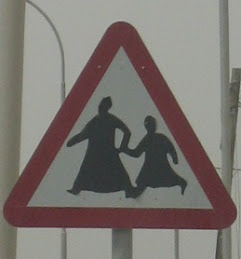



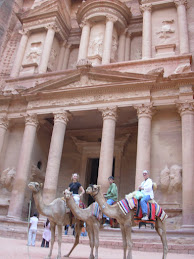.jpg)











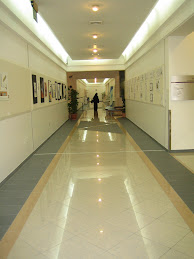

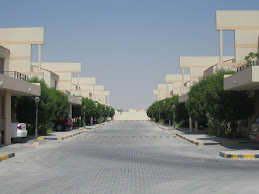



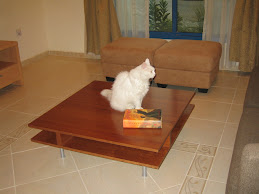


2 comments:
Carolyn,
Your last two posts were really great. I remember teaching Saudi students years ago when they sent undergraduates to the US (they no longer do so). I recall that Ramadan was a real challenge for them, and their academic work suffered.
Petra must indeed be one of the world's great destinations. I do certainly enjoy it vicariously with you!
I enjoyed your stories and pictures. You keep throwing in off-handed comments like "we rode horses as close as we could" like it was nothing unusual! I did not realize that there were bagpipes in the region either.
Thanks for sharing your excellent adventures with us.
Post a Comment